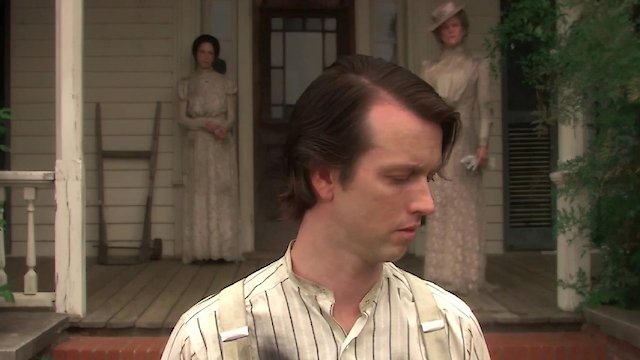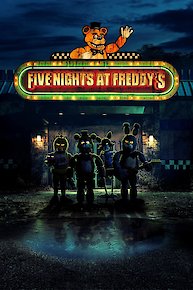
The Yellow Wallpaper
Where to Watch The Yellow Wallpaper

The Yellow Wallpaper is a haunting psychological thriller that breathes new life into Charlotte Perkins Gilman's classic short story of the same name. Released in 2012 and staying true to the story’s themes of confinement and mental degradation, the film stars Aric Cushing, Juliet Landau, and Dale Dickey, weaving a narrative that explores the depths of the human psyche against a backdrop of societal expectations and gender roles.
Set in the late 19th century, the film introduces us to Jane, portrayed by an evocative Juliet Landau, who is suffering from what is best described as "nervous depression." To aid in her recovery, her husband, John (played with notable restraint by Cushing), a physician who embodies the paternalistic attitudes of the era, confines her to a secluded room in a remote mansion for a strictly prescribed "rest cure." This treatment reflects the oppressive medical practices of the time, which often disregarded the autonomy and emotional complexity of women’s health issues. John’s intentions are good, but his approach is fundamentally dismissive of Jane's needs as an individual and an artist.
The room where Jane is confined becomes a character in its own right, dominated by its disturbing wallpaper—a ghastly yellow pattern that seems alive with secrets and whispers. Jane, struggling against her entrapment, becomes increasingly obsessed with the wallpaper’s intricate designs. As she descends deeper into her fears and fantasies, the wallpaper represents not only her mental state but also the broader themes of repression and societal constraints on women. The film artfully captures these layers, using the wallpaper as a symbol of Jane’s growing desperation and her quest for identity amidst her husband’s overbearing control.
Dale Dickey plays a critical role in the film, portraying a caretaker whose presence adds to the film's tension and complexity. Her character oscillates between being a source of comfort and a reminder of Jane’s isolation, reflecting the duality of relationships in situations of confinement. The interactions between Dickey and Landau are charged with emotion, showcasing the complexities of women’s friendships and the subtle power dynamics that arise when one is trapped in an oppressive environment.
As the narrative unfolds, the film delves into Jane's inner turmoil, effectively illustrating her struggle for self-expression in a world that seeks to silence her. The cinematography enhances this portrayal, with close-up shots capturing the intensity of Jane's emotional landscapes while wider frames highlight her physical confinement. The visual language reflects the claustrophobia of her surroundings and creates an engrossing atmosphere that pulls the audience into Jane's distorted realities.
The sound design adds another layer of depth to the storytelling, with haunting melodies and ambient noises that echo Jane’s mental disarray. As her relationship with the wallpaper intensifies, the score becomes increasingly dissonant, mirroring her spiraling descent into madness. This combination of sound and visual elements contributes to an immersive experience, pulling the viewer into the dark recesses of Jane’s mind while examining the historically rooted stigmas surrounding women's mental health.
The film does not shy away from the realities of mental illness; instead, it confronts them head-on, illuminating the trials faced by those who contest societal norms and expectations. It serves as an indictment of the misogyny embedded in the medical establishment of the time, using Jane’s plight to shed light on the broader struggles for autonomy and understanding.
The Yellow Wallpaper also engages with themes of creativity and repression. Jane's artistic ambitions clash violently with her enforced passivity, leading her into a psychological battle where self-expression becomes both a refuge and a source of torment. As she grapples with the constraints imposed upon her, the narrative touches upon the vital connection between mental health and creativity, exploring how the two can be deeply intertwined in both nurturing and destructive ways.
In its essence, The Yellow Wallpaper is a chilling exploration of isolation, gender roles, and the human condition. It captures the essence of a woman’s fight against the invisible chains of a patriarchal society, inviting viewers to reflect on the historical context while resonating with contemporary discussions about mental health and individual autonomy. As Jane navigates her labyrinthine struggles, the film leaves audiences questioning the boundaries of sanity and the lengths to which one must go to reclaim one’s identity when faced with societal repression.
With its strong performances, compelling visuals, and evocative score, The Yellow Wallpaper stands as a significant adaptation that not only honors the source material but also breathes fresh relevance into its cautionary tale, making it a thought-provoking watch for anyone interested in the complexities of the human mind and the societal pressures that shape our identities.
The Yellow Wallpaper is a Horror, Thriller movie released in 2012. It has a runtime of 115 min. Critics and viewers have rated it moderate reviews, with an IMDb score of 5.6..
How to Watch The Yellow Wallpaper
Where can I stream The Yellow Wallpaper movie online? The Yellow Wallpaper is available to watch and stream, buy on demand, download at Plex, Google Play. Some platforms allow you to rent The Yellow Wallpaper for a limited time or purchase the movie for downloading.























